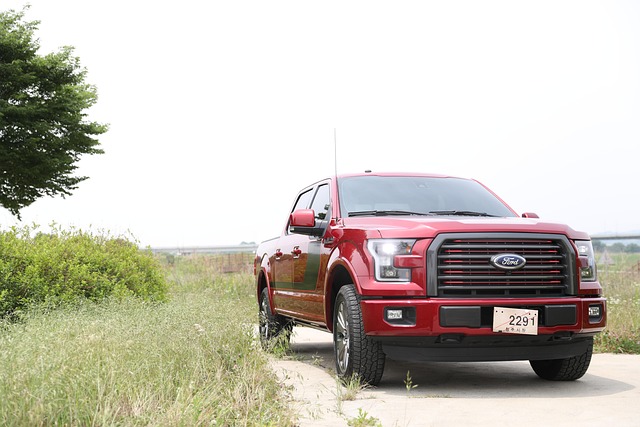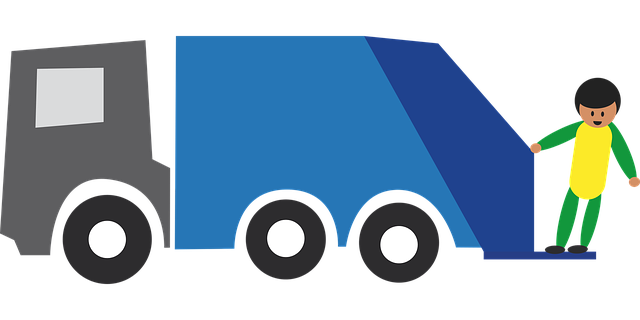Looking to register your car in California? This comprehensive guide walks you through the process step-by-step. From understanding key requirements like the need for a valid VIN verifier, to gathering all necessary documents, and even using DMV services online or visiting a local office, we’ve got you covered. We’ll also break down completing the application, paying fees, and obtaining your license plate.
- Understand California Vehicle Registration Requirements
- Gather Necessary Documents for Car Registration
- Visit a DMV or Use Online Services for Registration
- Complete and Submit the Vehicle Registration Application
- Pay Registration Fees and Receive Your License Plate
Understand California Vehicle Registration Requirements

Before registering your car in California, it’s crucial to understand the state’s specific requirements. One key aspect is ensuring your vehicle has a valid and accurate Vehicle Identification Number (VIN) inspection. This process verifies the authenticity of your car’s VIN, a unique identifier that provides valuable information about the vehicle’s history. In California, this inspection is often conducted through a mobile vin verification service, allowing you to complete the step conveniently from your home or workplace.
The state requires this verification as part of the registration process to combat fraud and ensure only legitimate vehicles are on the road. A valid vin inspection confirms that your car meets all safety standards and has not been reported stolen. Understanding these requirements is a vital step in ensuring a smooth car registration process in California.
Gather Necessary Documents for Car Registration

Before you begin the car registration process in California, it’s essential to gather all the required documents. One crucial piece is the Vehicle Identification Number (VIN) verification. You can use a mobile VIN verifier or conduct a mobile VIN inspection to ensure your vehicle’s authenticity and history are up-to-date. This step is vital as it helps verify the car’s title, previous owners, and any potential issues.
Along with this, you’ll need basic documents like a valid driver’s license, proof of insurance, and perhaps even your purchase agreement or sales receipt. These ensure a smooth registration process at the California Department of Motor Vehicles (DMV). Remember to check their website for a comprehensive list of requirements before visiting any DMV office.
Visit a DMV or Use Online Services for Registration

You have two main options when it comes to registering your car in California: visit a DMV office or use online services. If you prefer a more traditional approach, heading down to your local Department of Motor Vehicles (DMV) is still an effective method. Bring all necessary documents, including proof of ownership and insurance, along with your driver’s license. A DMV agent will guide you through the process, which involves filling out registration forms and providing relevant information about your vehicle.
For a more convenient and modern solution, consider using California’s online registration system. This method allows you to complete the entire process from the comfort of your home. You’ll need a valid driver’s license or state ID, proof of insurance, and a mobile vin verifier app for the unique identification number (VIN) verification step. A mobile vin inspection ensures the vehicle’s history is accurately checked, providing peace of mind when registering your car in California.
Complete and Submit the Vehicle Registration Application

To begin the registration process, you’ll need to complete and submit the Vehicle Registration Application (VRM). This form requires detailed information about your vehicle, including its make, model, year, and unique VIN (Vehicle Identification Number) which acts as a digital fingerprint for your car. The VIN is typically located on the vehicle’s registration label or in its owner’s manual.
Ensure that your VIN is accurate and legible before proceeding. For added convenience and precision, many individuals opt for a mobile VIN verification service. These services allow you to quickly and easily confirm your VIN through a smartphone app, streamlining the initial registration steps. Once your application is complete, submit it along with required fees to the California Department of Motor Vehicles (DMV) for final processing.
Pay Registration Fees and Receive Your License Plate

After verifying your vehicle’s information through a VIN verifier or by checking the documents provided by the dealer, it’s time to pay the registration fees. California has specific fee structures depending on factors like the type and age of your vehicle. You can typically pay these fees online, over the phone, or in person at a DMV office. Once the payment is processed, you’ll receive your license plate. This process may be accelerated when using services like mobile VIN inspection or hiring a vin inspector, as they can streamline the initial verification and registration steps.
Ensure that you have all necessary documents, including proof of insurance, before proceeding to the license plate issuance stage. It’s crucial to display these plates on your vehicle for legal driving, so make sure they are correctly fastened and legible. This straightforward step completes the registration process, making your vehicle roadworthy in California.
Registering a car in California is a straightforward process, ensuring your vehicle complies with state regulations. By understanding the requirements, gathering essential documents, and either visiting a DMV or utilizing online services, you can efficiently complete the registration. Don’t forget to utilize a reliable VIN verifier to ensure the vehicle’s history is clear, protecting your investment. Once your application is approved, you’ll receive your license plate, making your car legally registered in the Golden State.
